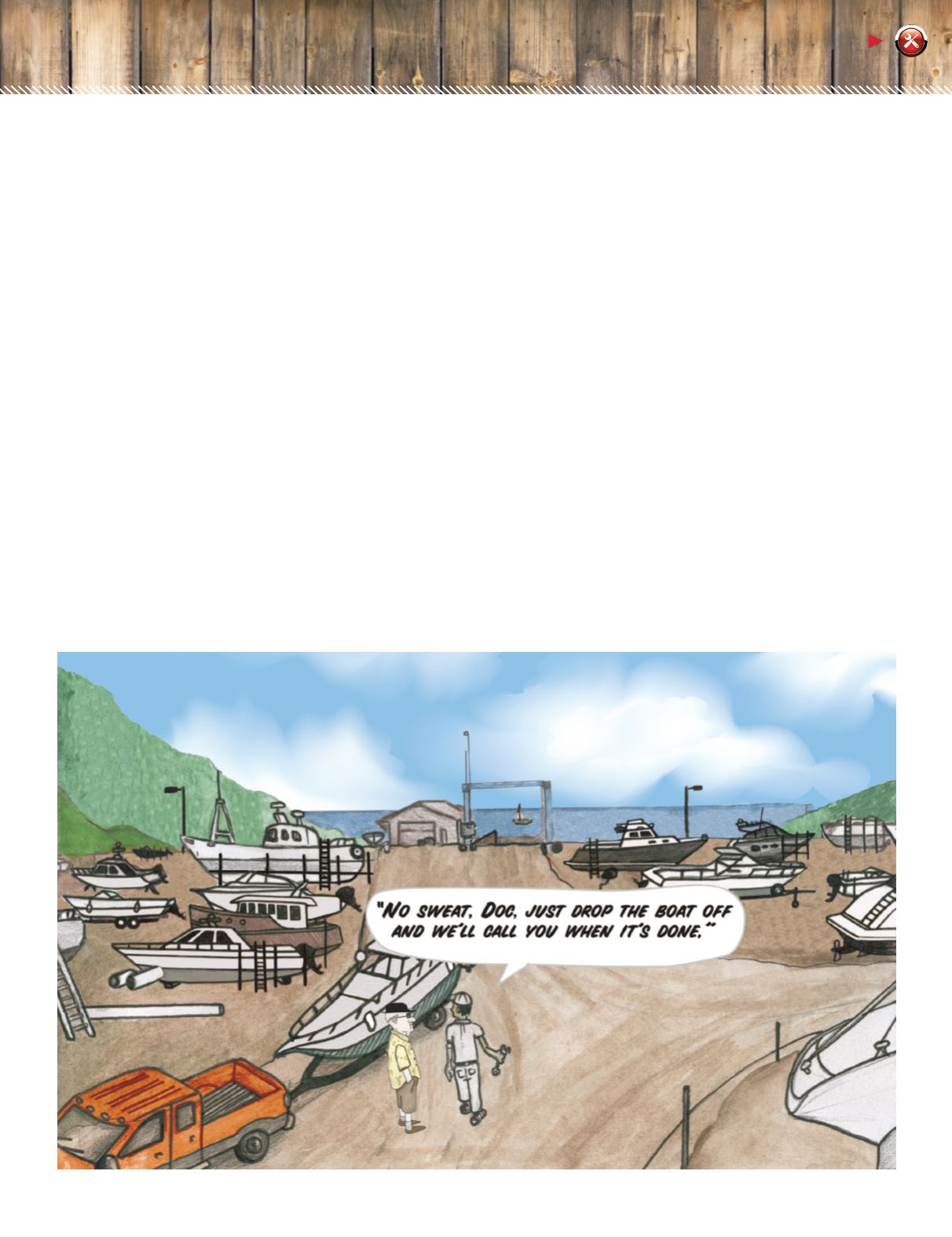
SPRING 2015 | MARINE TECHNICIANTODAY
13
stern drive engine. Of course it would be located in a limited space
enclosed by bulkheads, storage compartments, and upholstery, all
positioned below an aft sundeck. Pictures showing the limited
access due to accessories and boat partitions and shots of the bilge
pump mounted underneath the oil pan illustrate the situation better
than an extended phone call – as the old saying goes, “A picture
is worth 1,000 words.” The same use of images for explanations
works well in salt water environments. Photographing items such
as rusted starters and exhaust manifolds along with other salt
encrusted objects that a marine mechanic encounters may assure
the customer that you are not ripping him off. You may even get the
customer to come in for more frequent servicing to minimize future
saltwater corrosion problems.
Communicating with your customers does not stop after the bill is paid
and the boat leaves the yard. A quick call, text, or email to the owner
a week or so after pickup asking if everything is to their satisfaction
helps you to know if the customer is happy and not bad-mouthing you
to others. The well-known business maxim states that an unhappy
consumer informs about ten people of their bad experience but only
tells two people about a good experience. That saying is even more
important today with the advent of social media such as Facebook,
Twitter, and numerous online boating websites. Just by using a
keyboard, a disgruntled customer is capable of spreading his tale
of woe to not ten, but to thousands of people and that will be read
by others for years to come. Good customer relations were never
more important than they are now. Be aware that it is very hard to
overcome bad comments online, even if they are incorrect. Try to be
proactive before things spiral out of control.
Keep in contact with customers by sending flyers and reminders,
perhaps combined with special pricing or a discount coupon. This
reminds boat owners that you are concerned for their pride and joy.
Keep records of your customers’ services and notify them of any
upcoming specials and before the next maintenance interval. If minor
problems were noted but not repaired previously, suggest they come
in during the off-season to take care of them. The engine history
printouts from today’s computer-controlled engines give insight on
the running hours and how the customers operate their boats. Use
that information to your advantage to send out email messages or
postcards when the boat is likely to need to visit your shop again.
Remember that consistent communication not only enhances your
reputation and increases the bottom line but it also is your best
ammunition against problematic situations.
TODAY’S TECHNICIAN


